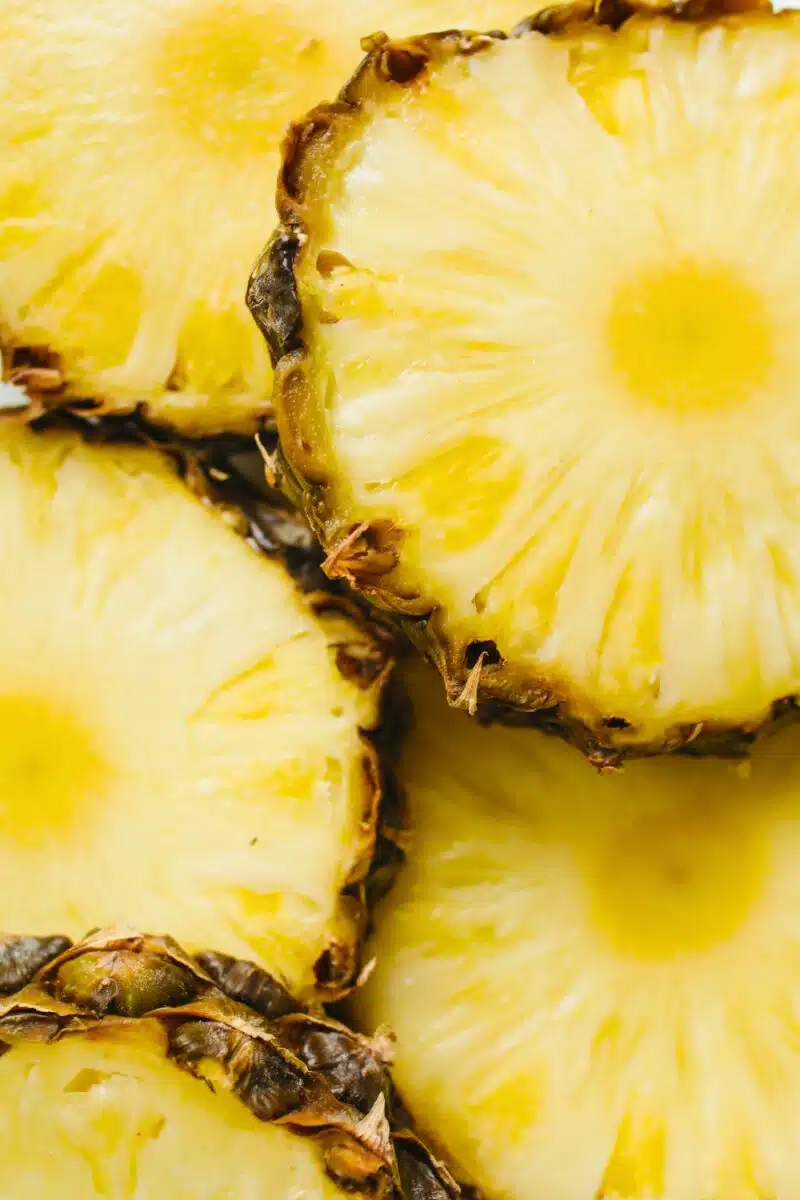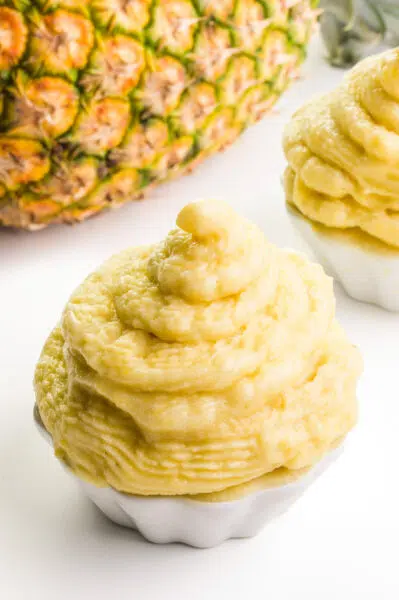Composting Pineapple
Composting is an excellent way to reduce food waste and enrich your garden’s soil, but how do you do it? Which parts of the pineapple are ok for composting? Let’s answer those questions as we dive into the world of composting pineapple, a delicious tropical fruit that can also be a valuable addition to your compost bin.
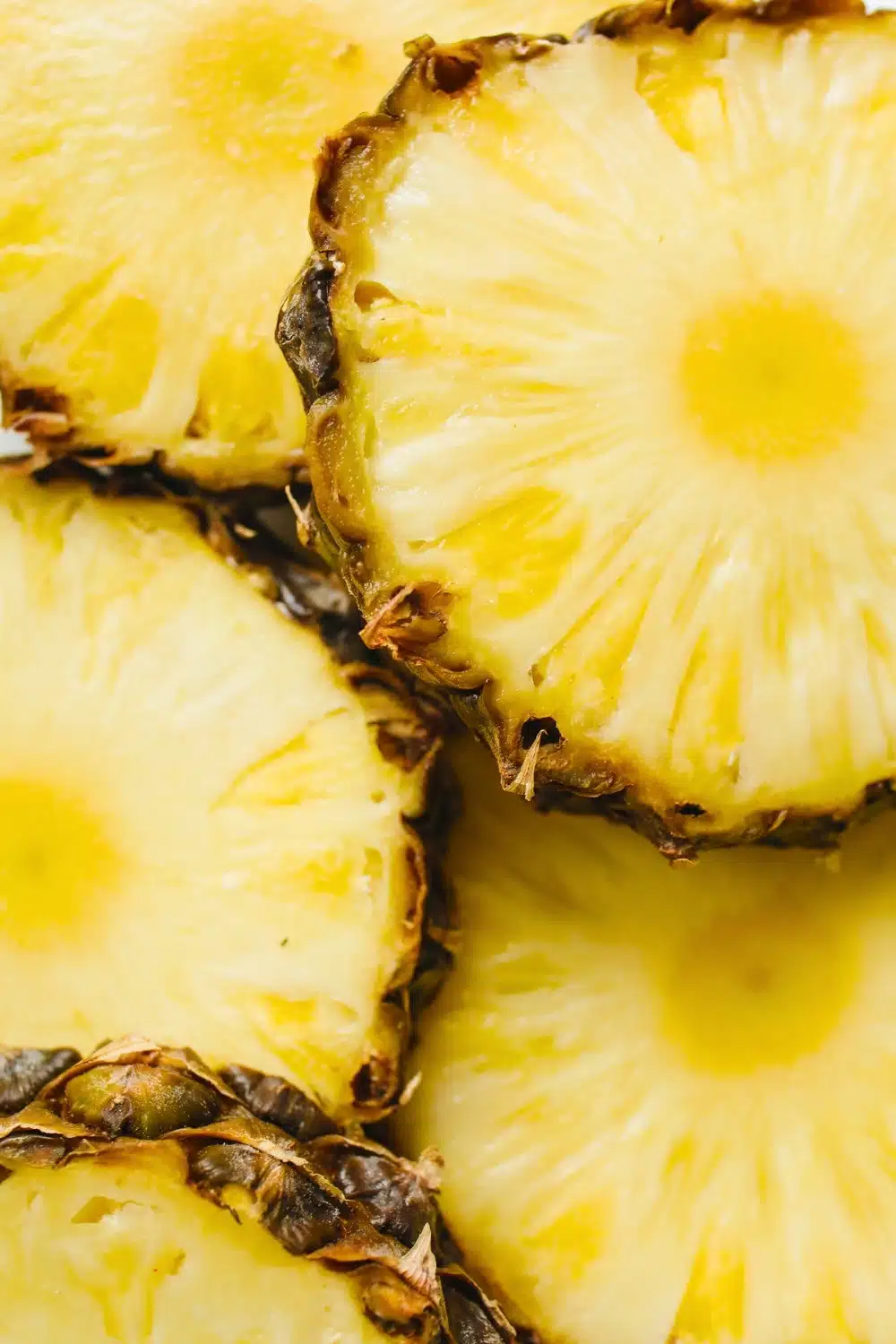
You know I love buying fresh pineapple. It’s why my post on How to Cut Fresh Pineapple is so popular!
But what do you do with the discards? Throw them in the trash?
Here’s the good news. Pineapple peels and scraps are absolutely compostable. Let’s discuss how you can make the most of this juicy, nutrient-rich waste. But first, it’s important to talk about the various parts of a pineapple.
Parts of a Pineapple
Pineapples are more complex than you may realize. There are several parts to a pineapple’s anatomy and each one breaks down in a compost bin differently.
Let’s break down the parts of pineapples and label them:
- Crown: The leafy, spiky top of the pineapple, which is often cut off when preparing the fruit.
- Flesh: The edible, sweet, and juicy part of the pineapple, which is the main reason most people enjoy this tropical fruit.
- Core: The tough, fibrous center of the pineapple that is usually not eaten and can be a bit slower to decompose.
- Skin: The rough outer layer of the pineapple which protects the fruit and contains many of the fruit’s nutrients.
- Leaves: The long, green, spiky leaves that extend from the crown of the pineapple.
- Base: The flat bottom part of the pineapple which is cut off when preparing the fruit for consumption.
Each part of the pineapple can have a role in composting, but some may break down faster than others due to their texture and composition. Properly preparing and balancing these parts in your compost can help you make the most of this tropical delight in an eco-friendly way.
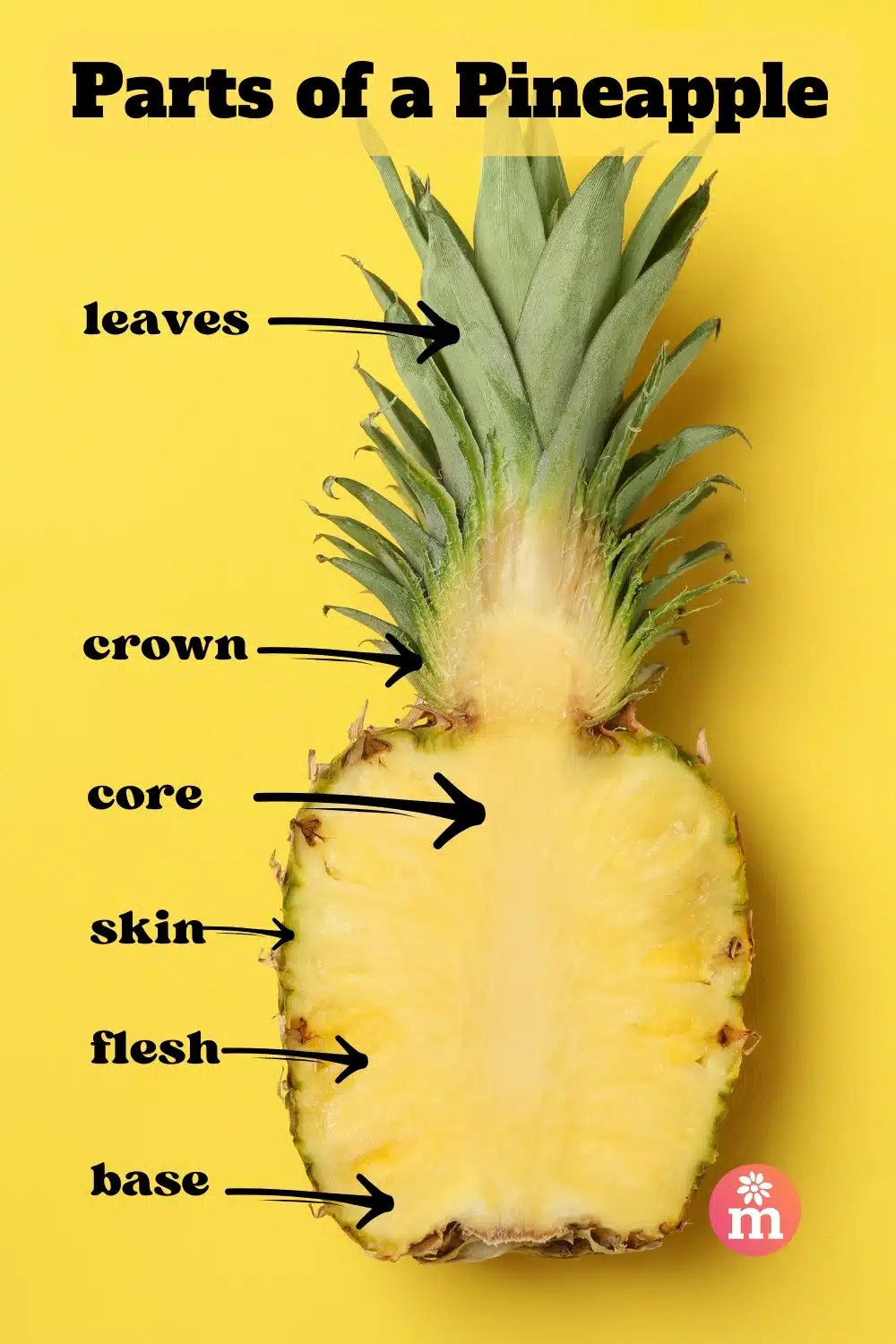
How to Compost Pineapple Scraps
Here are the various ways you can compost the scraps after chopping up your fresh pineapple.
1. Prepare the Pineapple Scraps
- Start by cutting off the pineapple’s crown and base. These tougher parts can take a bit longer to break down, so it’s best to chop them into smaller pieces.
- Remove any remaining flesh from the skin and the core. These fleshier parts will decompose more quickly.
2. Mix It In
- Pineapple scraps are considered “green” materials in composting, which means they’re high in nitrogen. To balance this out, you’ll want to add “brown” materials like dried leaves, cardboard, or paper. This balance creates a well-rounded compost pile.
- Aim for a roughly 2:1 ratio of brown to green materials. This will help the composting process run smoothly and efficiently.
3. Proper Layering
- Layer the pineapple scraps with your brown materials in your compost bin.
- Make sure the scraps are evenly distributed throughout the pile to encourage even decomposition.
4. Turn It Over
- Regularly turn your compost pile to aerate it.
- This helps break down the pineapple and other organic matter faster.
5. Be Patient
- Pineapple scraps may take a bit longer to break down compared to some other kitchen scraps.
- This is because of their fibrous texture. So, be patient and give it time.
6. Enjoy the Fruits of Your Labor
- In time, your compost will transform into a rich, nutrient-dense soil that you can use to nourish your garden, creating a beautiful, sustainable circle of life.
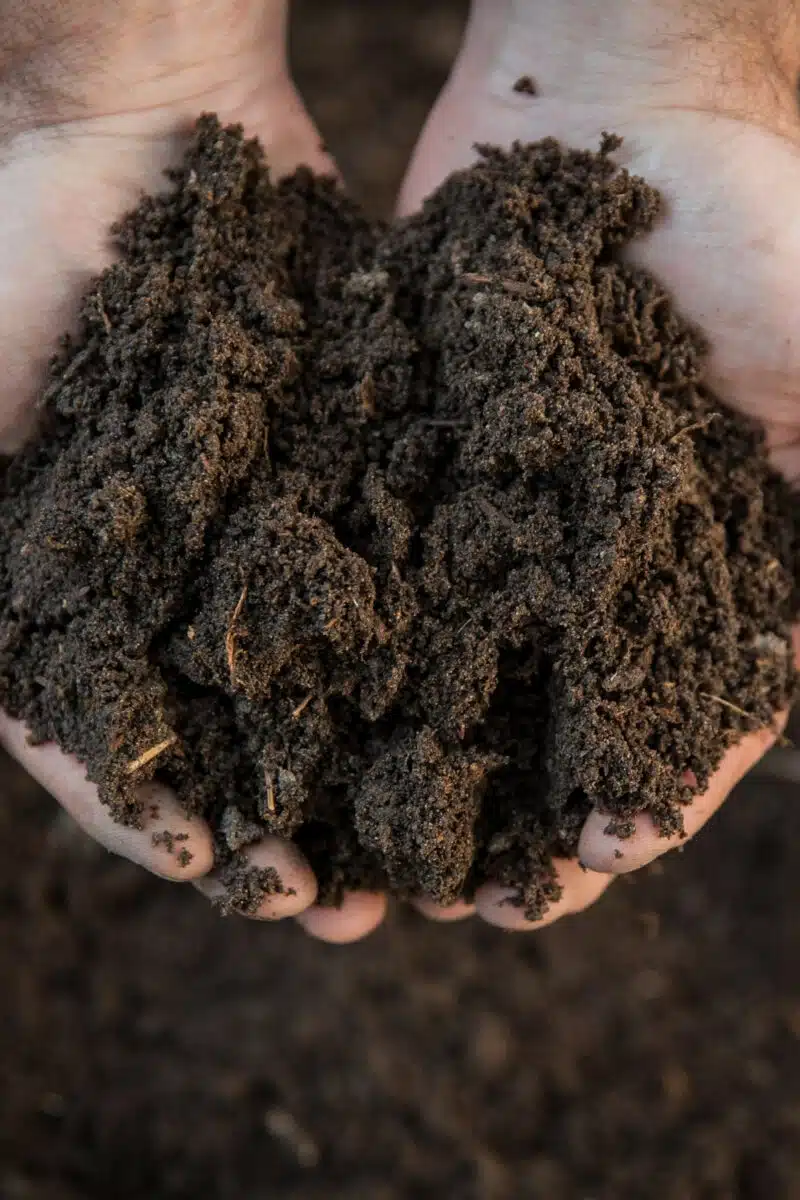
Frequently-Asked Questions
Is pineapple water good for plants?
Yes, diluted pineapple water can be used to water plants, but don’t overdo it because it is acidic. However, using it sparingly can provide some nutrients to the soil.
Is pineapple an acidic fruit?
Pineapple is considered an acidic fruit due to its natural acidity, primarily from citric and malic acids.
Composting Acidic Fruit
Acidic ingredients, like some fruits and veggies, can be added to a compost bin, but it’s essential to balance them with other materials to maintain a healthy composting environment. Here are some ways to mitigate the acidic nature of these items:
- Balance with Alkaline Materials: Add alkaline materials like crushed eggshells, wood ashes, or even shredded newspaper to counteract acidity. This helps maintain a neutral pH in your compost.
- Layering: Alternate layers of acidic materials with non-acidic ones (e.g., kitchen scraps with leaves or straw). This layering helps distribute the acidity and promote decomposition.
- Avoid Overloading: Don’t add an excessive amount of acidic materials at once. Spacing out their addition can prevent an overwhelming acidic influence on the compost pile.
- Monitor pH: If you’re concerned about acidity, you can occasionally test the pH of your compost. Adjust the balance of materials if needed to keep it closer to neutral.
By following these steps, you can effectively manage acidic ingredients in your compost bin and create a healthy environment for decomposition.
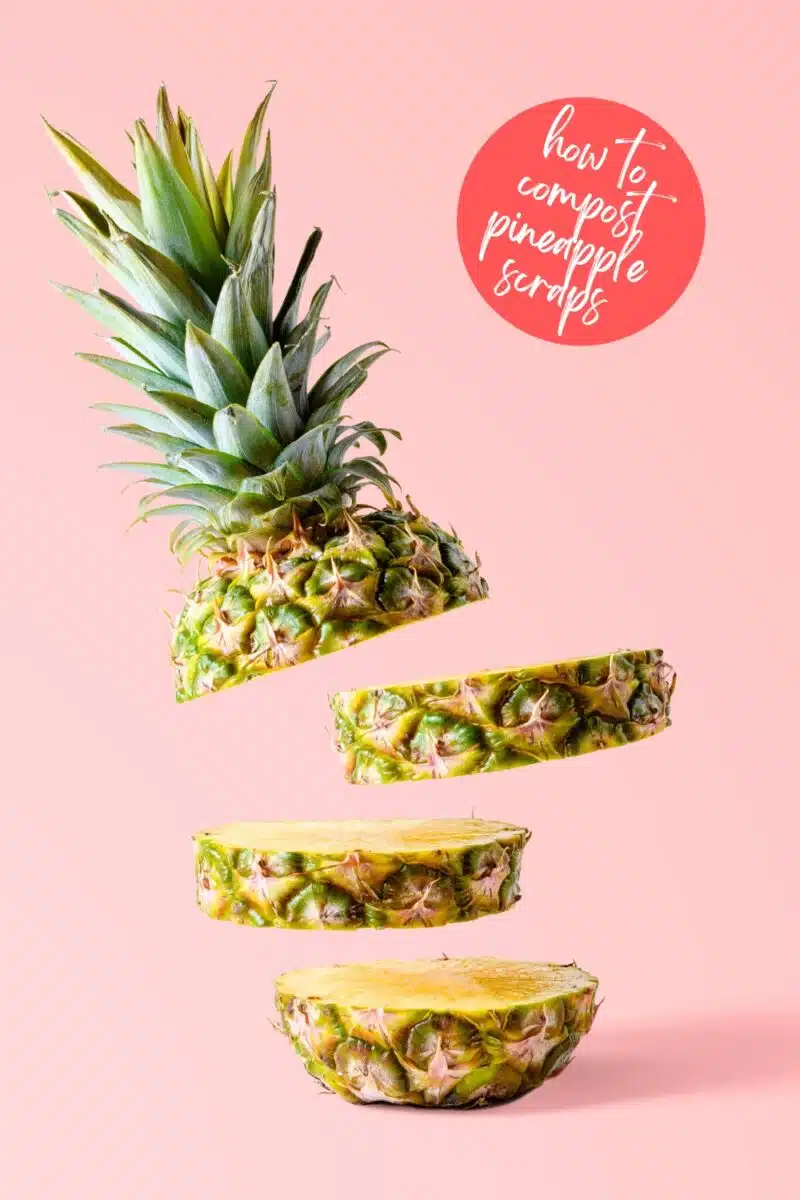
Pineapple Recipes
Now that you know how to cut your own pineapple and compost the scraps, it’s time to use that pineapple in your recipes! Here are some of my favorite pineapple recipes to try:
Want more? Click here for more plant-based pineapple recipes.
Conclusion
I’m so excited for you to add fresh pineapple to your diet. And better yet? To get “greener” in the process by composting the pineapple parts.
It feels great to know your diet and your composting is making a difference!
